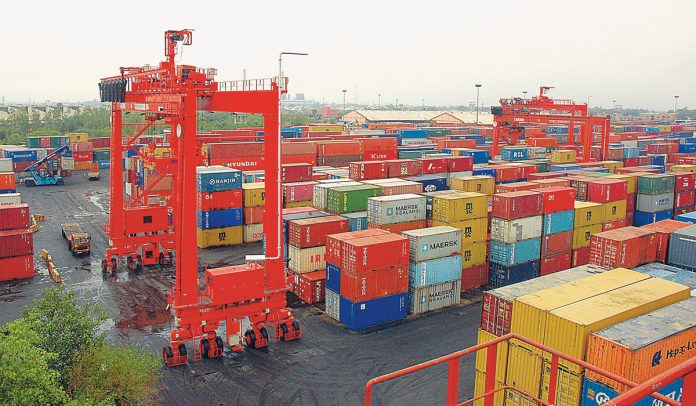Direct Port Delivery (DPD) system enables importers and consignees to deliver directly from port terminals. CARGOTALK speaks to the veterans about how DPD is helping the industry and facilitating CFS business.
Kalpana Lohumi
As a part of ‘ease of doing business’, Jawaharlal Nehru Port (JNPT) had initiated Direct Port Delivery (DPD) last year. With this initiative, the containers are delivered straight from its port to the consignees (importers), instead of initially holding it at a Container Freight Station (CFS), saving time and cost involved. CFS is an off-dock facility licensed by the Customs Department to help decongest a port by shifting containerised cargo and carrying out customs-related activities outside the port area. This concept came into business due to customs procedures and space constraints at many of the country’s ports. Hence, customs clearance happens at the CFS. But, with DPD, it is expected to speed-up delivery of cargo containers to importers/consignees to check extra cost and time involved in the clearances. Even JNPT was designed on the CFS model.
Explaining the concept of DPD, Capt Ram Iyer, Vice President, Seahorse Ship Agencies, shares, “India has ratified WTO’s Trade Facilitation Agreement and consequently, the Indian government, with a clear aim to expedite seamless logistics; discharge, movement, release and clearance of goods including those in transit, has embarked on a path-breaking DPD regime to enhance ease of doing business.”
“Indian government and customs officials are keen on enhancing the DPD levels to 40 per cent, and the trade in general including the CFSs and terminals, etc., wholeheartedly support the same”, he adds.
Now the question comes, ‘does this concept affect CFS’ business?’ CARGOTALK takes a look at what is going to happen with the CFS business if importers/consignees can take delivery of the containers directly from the port terminals and haul them to factories without taking them first to a CFS. Dinesh Gautama, President, Navkar Corporation, informs, “The CFS business will continue. It will transform with modifications to suit the changing scenario. The CFSs have been set up as per the guidelines issued under government policies for the development of the country and will continue to operate under the changing environment.”
“With enhanced capacity in Indian ports sector, DPD model surely was on the cards and like every other business, with a changing environment, the existing CFSs will, over a period of time, need to realign, re-engineer their services accordingly to further enhance their services to encompass a whole range of allied services in the EXIM logistics business. Most of the CFS majors would have strategised and geared suitably to cater to evolving changes,” feels Iyer. He adds, “Profit margins of CFS operators have surely come under pressure and in the present scenario, one does not envisage, new players to come into this arena. Consolidations, mergers and acquisitions could be on the cards.”
Kalyana Rama, CMD, CONCOR, says, “The increased adoption of DPD and Direct Port Entry (DPE) facilities at the various ports of the country is theneed of the hour. Port-led development is an important catalyst for overall economic growth and has a key position in the supply chain trade. Thus, increased share of DPD/DPE would sufficiently strengthen the supply chain by significantly lowering key parameters such as delivery time, transaction cost and transportation cost. Thus, this would contribute to the increased competitiveness of both the export-oriented manufacturing and trade activities as well as the domestic market.
With this backdrop and various innovative measures being taken by the government to facilitate implementation of this concept, the role of the CFSs around the ports needs to be revisited. The ICDs would be more relevant in the hinterland, where they would provide an extension to the seaport by rail/road.”
Role of CFS in long cargo dwell time
Adds Gautama, “The CFS has no role to play in long cargo dwell time at all. As soon as the cargo is discharged from the ships, the CFS trailers make a beeline for the terminals and start evacuation from the port to the CFS. If the consignee is ready at any stage, having completed the customs formalities and getting ‘out of charge’ status, the cargo is handed over to the consignee.”
“As per a recent study, in an endeavour to reduce dwell time of customs authorities and endeavouring best, a slew of measures have been ensured, including mandatory filing of advance bill of entry, and there has been a significant decrease in dwell time. As a result, ground rent charges of import laden containers, which contribute significantly to the bottom line of CFS, has also been affected,” shares Iyer. On the contrary, Rao explains why CFSs require to re-visit their business model with the implementation of DPD/DPE since short lead cargo would now not be available to them. “The facilities could be utilised for warehousing, cargo aggregation/disaggregation and storage of these DPD/ DPE containers which an importer/exporter may not be able to do so in his premises because of paucity of space,” he adds. “Thus, as is apparent with some smart business re-engineering, CFSs can utilise the opportunity thrown up with the implementation of DPD/DPE to tap on the large business volumes available. All the stakeholders would require to get sensitised to the new scenario and redefine their role in the renewed supply chain,” he continues.
Impact on CFS after DPD
“Yes! volumes handled by CFSs have been affected due to DPD. However, one does not envisage the fortunes of CFSs to dramatically change and in fact, DPD regime could be the real catalyst to ensure much desired improvement in quality and service parameters at CFSs, to retain and attract clients, as well as also ensure a host of cost rationalisation measures and stay ahead in a highly competitive scenario,” feels Iyer.
“The role of the CFS continues to be the same. Under the DPD system, the cargo is taken directly from the terminal to the consignee’s factory. Hence, the CFS does not come into the picture. However, if consignee’s have any special logistics requirements for storage and de-stuffing of ‘out of charge’ containers, the CFSs are always there to meet any specific requirements of such consignees,” Gautama explained.
“Today, ports in India are a place of ‘interchange’ – basically just for loading and discharging of containers. All other functions like examination, testing, storing, and awaiting completion of other formalities (ADC, chemical testing, PQ, FSSAI etc) can be done at the CFSs. Such functions of a CFS help in de-clogging the ports, assisting the consignee to complete the formalities, and at the same time assist in the storage for appropriate movement at required stages to the factory. This helps maintain the momentum at the factories without the need for stresses in the supply chain,” he says.
“CFS operators are hopeful that India’s growth in containerised trade volumes could surely ensure that the volumes handled at CFSs are not significantly affected or altered with the introduction of DPD deliveries,” adds Iyer.
Realising the importance of Inland Container Depots (ICDs), Rama, adds, “Thus, the relevance of ICDs would remain intact with more stress being given for increasing the rail share for movement of cargo to the hinterland. ICDs would facilitate the importers and exporters and have a large scope of tapping the growing business volumes with the push to the ‘Make in India’ campaign. These hinterland ICDs would have to provide facilities such as modern warehousing, value addition services and facilitate all those activities which are in line with the concept of Multi Modal Logistic Parks (MMLPs). With the implementation of GST and the upcoming DFCs, these hinterland ICDs would play a major role in moving the export/import cargo from the seaport to various manufacturing and consumption centres in the hinterland.”
Adding to that, Gautama notes, “Warehousing is an option in the supply chain. But each CFS will have to look at its own strengths and functionalities based on its geographic location vis-à-vis hinterland.”













